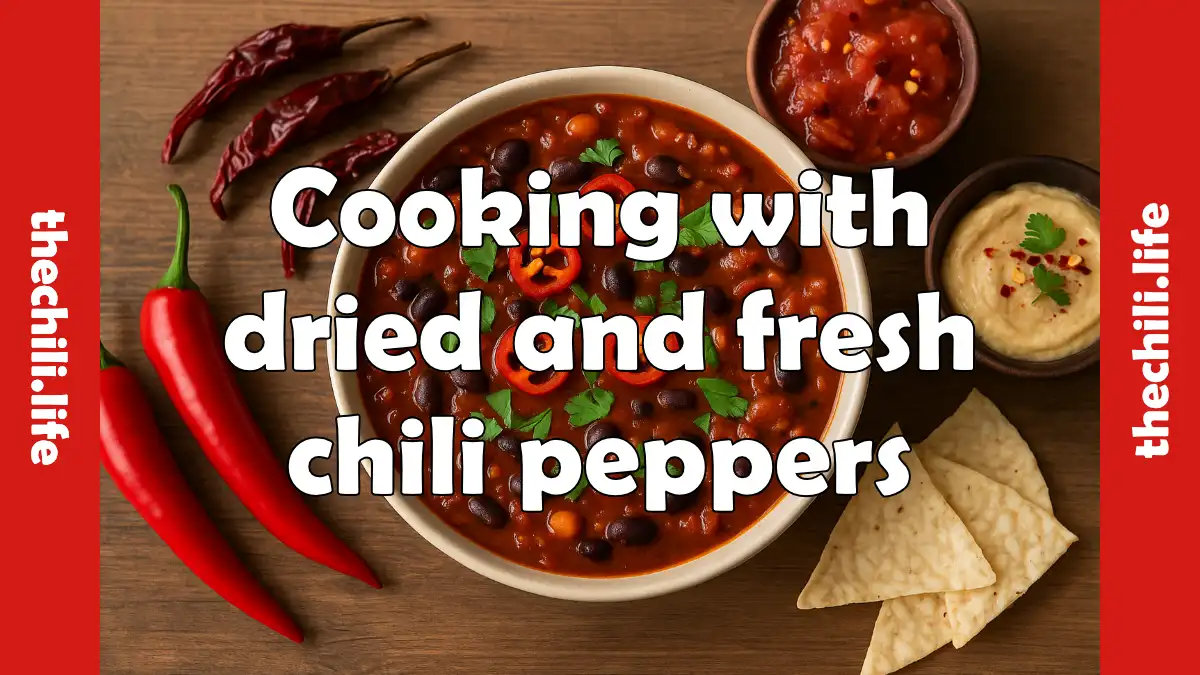How to Cook Chili Peppers: Dried & Fresh


In this post, I’m going to show you how I like to cook with chili peppers, both dried and fresh. These little things can change a dish. Sometimes it’s about adding a fiery punch, other times it’s just that warm, slow-building heat that pulls everything together. No matter what kind of cooking you’re into, there’s a chili that fits.
I use chili peppers all the time, and what I’ve learned is that they’re incredibly flexible. Whether you’re throwing a fresh one into a stir-fry or crushing up something dried into a slow-cooked stew, they bring more than just heat. They bring flavor. Dried chilis often add something smoky or earthy. Fresh ones can be bright, fruity, or just sharp and hot. It’s fun to experiment.
Earlier, I wrote about what to do with extra hot peppers and went through ideas like making chili oil and other spicy condiments. But this time, the focus is more on how to cook with them. How to get the most out of their flavor. How to prepare them. How do you balance them with the rest of the meal?
So if you’ve got some dried chili pods sitting around or maybe a bowl of fresh ones from the garden, I’ll walk you through a few different ways to use them. The idea isn’t to overpower your food; it’s about finding the right amount of heat and flavor that works for you. Let’s get started and see what you can do with the chilis you’ve got.
Table of Contents
- How to Cook with Dried Chili Peppers
- How to Cook Fresh Chili Peppers
- Recipes with Chili Peppers
- Conclusion
- More inspiration
See also the recent post if you are using chili oils:
How to Cook with Dried Chili Peppers
In this section, I will show you how to cook with dried peppers, but first, we will have a look at what the benefits are of using dried chili peppers.
The Benefits of Using Dried Chili Peppers when Cooking
There’s something special about cooking with dried chili peppers. They’re not just about heat; they add depth. I use them when I want that slow-building flavor that fresh chilis sometimes don’t give. A dried chili, once rehydrated or toasted, can bring out smoky, earthy notes that work beautifully in soups, stews, sauces, and even homemade chili oil.
One of the best things is how long they keep. I always have a stash of dried peppers in the kitchen, ready whenever I need to add a bit more character to a dish. They’re great for grinding into powder, too, or soaking and blending into a smooth paste for a sauce base. Dried peppers are flavor on standby, easy to store and easy to use when you want to turn something ordinary into something memorable.
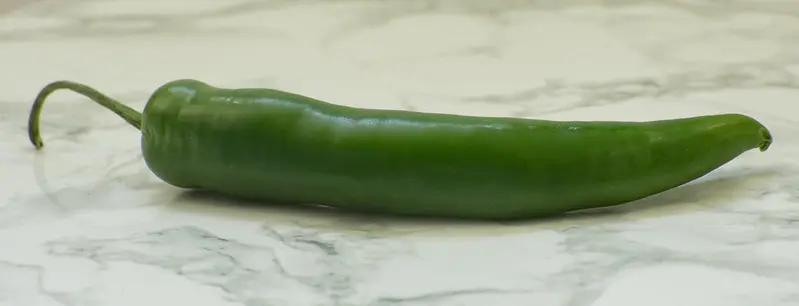
Exploring Popular Dried Chili Varieties to Use in Your Dishes
I love experimenting with various dried chili varieties, but let’s talk about the classic duo: red and green chilies. The red ones, often sun-dried, are known for their robust and slightly sweet flavor. The green dried chilies retain a milder, earthy taste, perfect for those who prefer a subtle smokiness in their dishes.
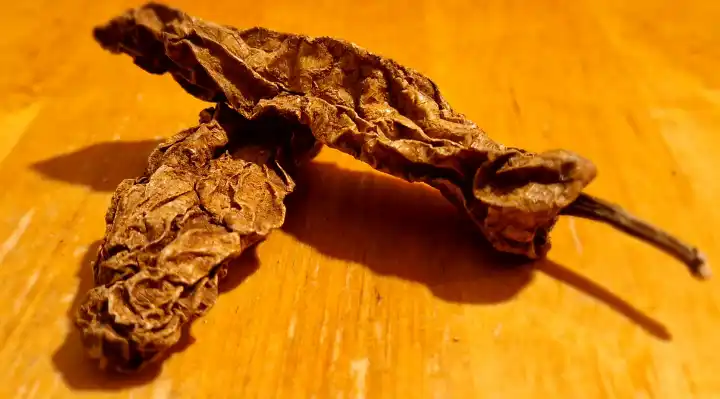
Rehydrating and Cooking with Dried Chili Peppers
Rehydrating dried chili peppers is something I do often when I want to bring out their full flavor. I usually start by snapping off the stems and shaking out most of the seeds. Then I soak them in hot water for around 20 to 30 minutes until they soften up. Once they’re ready, I blend them straight into sauces, stews, or soups. It’s a simple step, but it makes a big difference in taste.
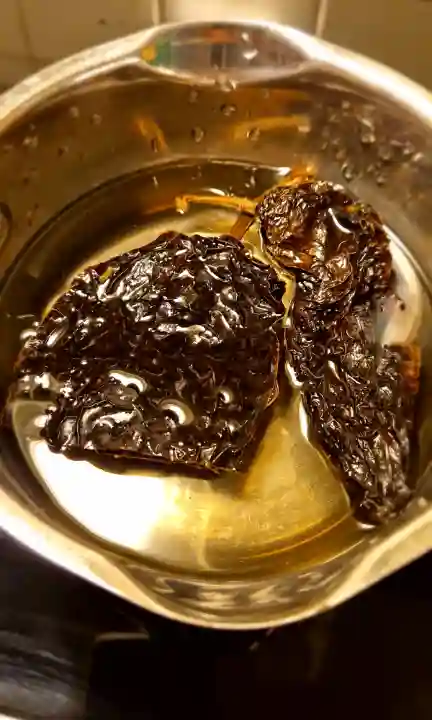
For an extra kick, toast the rehydrated chilies in a dry skillet to intensify their smokiness before adding them to your recipes.
Using Dried Chili Peppers Without Rehydrating
Now, I don’t always rehydrate dried chili peppers before using them. Sometimes I toss them straight into the pot. If I’m making something like a slow-cooked stew or a sauce that simmers for a while, the dried peppers will soften up on their own and slowly release all that bold, smoky flavor into the dish. It’s an easy way to add depth without doing much extra.
One thing I like to do is give the dried peppers a quick toast in a dry pan before adding them. Just a few seconds on each side until they start to puff a little and smell smoky. It really brings out their flavor. Just don’t overdo it or they can turn bitter.
So whether I rehydrate them or use them straight from the jar, dried chili peppers always find their way into my cooking. They’re one of those ingredients that just makes everything taste a little better. Try both ways and see what works best for your kind of cooking.
Adjusting the Heat Level with Dried Chilies
One thing I’ve picked up over time is that managing heat in a dish is all about balance. Dried chili peppers can really vary in how hot they are, so I usually taste a small piece before using them. If I want a milder kick, I take out the seeds and those pale inner bits. If I’m after something stronger, I leave them in. It’s a simple way to dial the heat up or down and make the chili work for whatever I’m cooking.
How to Cook Fresh Chili Peppers
Let’s talk about cooking with fresh chili peppers. I really enjoy using them because they bring something sharp and lively to the kitchen. When I cook with fresh chilies, it’s all about letting their character shine. Each one has its own thing going on, and once you get a feel for that, they can completely change a dish.
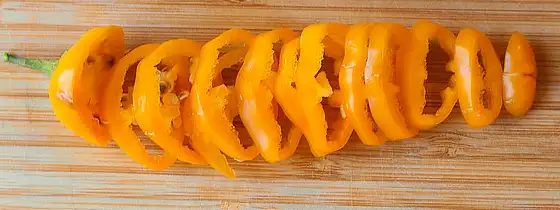
The Uniqueness of Fresh Chili Peppers
Fresh chili peppers are a whole different experience compared to dried. They’ve got that crunch, that immediate hit of heat, and a brightness that dried peppers just can’t give you. I love the way red and green chilies do different things. The red ones usually have a sweeter, fruitier taste and a bit more heat since they’ve had more time to ripen. Green chilies, on the other hand, are usually a little milder and have more of that grassy, fresh flavor. I use them in everything from stir-fries to marinades. It’s fun figuring out what works best in each dish.
Handling, Slicing, and Cooking with Fresh Chili Peppers
When it comes to fresh chili peppers, a little prep goes a long way. I always start by rinsing them under cold water and drying them off. Then, depending on the heat I’m after, I either leave the seeds in or take them out. For milder dishes, I usually remove both the seeds and the pale inner parts. Slicing them thinly or chopping them up small helps the flavor spread through the whole dish.
If I want the heat to really soak in, I’ll throw them in early while things are still cooking. But if I want more of that raw, sharp chili bite, I save them for the end. They’re great in everything from stir-fries to soups to fresh salsas. Once you start using them in different ways, it’s easy to see how they can turn even the most basic meal into something a bit more exciting.
Minimizing Chili Burn and Maximizing Flavor
Fresh chilies are fun to cook with, but they can bite back. I’ve learned the hard way to wash my hands well after handling them, especially before touching my eyes or face. If the heat gets a bit too much, a spoonful of yogurt or a glass of milk usually helps. And when I add dairy like cream or sour cream into the actual recipe, it smooths out the spice and adds a nice balance to the heat.
There’s no shortage of ways to use fresh chili peppers. Sometimes I’ll slice a few over tacos or fold them into rice. Other times I’ll mix them into something more complex. Either way, they add personality. You don’t need to go wild with the heat either, just enough to wake the dish up.
Recipes with Chili Peppers
Let’s get into some of my favorite ways to cook with chili peppers. These are recipes I go back to often, and they show just how much you can do with both fresh and dried varieties.
Vegan Black Bean and Cocoa Habanero Chili
Step into a world of bold flavors with my vegan black bean and cocoa habanero chili recipe. This is a hearty and rich chili I make when I want something with real depth but no meat. The combo of black beans and a little cocoa gives it that earthy, slightly bitter base that works perfectly with the heat from Habanero peppers. It’s ready in under 40 minutes, which makes it perfect for weeknights. If you’re not vegan, feel free to throw in some beef and let it simmer longer. The flavor only gets better the more time it has.
Tomato Chili Jam
My tomato chili jam (also vegetarian) is a delightful fusion of flavors. This is a sweet and spicy jam I make using ripe tomatoes, Jamaican bell chilies, onion, garlic, coconut sugar, and fresh ginger. It’s great on everything from sandwiches to grilled cheese or even as a side to roasted vegetables. I usually make a few jars when I have a chili harvest that’s gotten out of hand. It keeps well and adds a punch of flavor whenever I need it.
Exploring Global Spice
What I love about chili peppers is how they show up in so many kitchens around the world. In Mexican cooking, you’ve got salsas, enchiladas, and stews built around layers of chili flavor. In Indian food, chili brings heat and brightness to everything from curries to chutneys. In Korean dishes, like kimchi or gochujang, the spice is fermented and complex. Every culture seems to do something a little different with it, and it’s all worth exploring.
Discover More Spicy Adventures
If you’re looking for even more to try, here are a few spicy dishes I’ve really enjoyed making (and eating):
- Spicy Shrimp Tacos – A Perfect mix of heat and freshness wrapped in a tortilla.
- Jamaican Jerk Chicken – That smoky, spicy marinade makes everything taste better.
- Peri-Peri Chicken – A favorite if you like bold heat with a tangy kick.
There’s a lot to explore when it comes to cooking with chili, and I’m always adding new recipes to the mix.
Conclusion
Cooking with chili peppers, fresh or dried, really opens the door to so many flavors. Whether it’s the slow, smoky heat from a dried pod or the crisp sting of a fresh chili, there’s always something new to discover. You don’t have to go overboard. Just learn what works for your taste and build from there.
If you’re looking for something unique, don’t forget to check out my Hot Banana Sauce recipe here on the blog. It’s sweet, spicy, and adds a really fun twist to a lot of dishes.
Got your own favorite ways to cook with chili peppers? Let me know in the comments. I’d love to hear what you’re making—and what kind of heat you like. And if you enjoyed the post, feel free to share it and tag me @thechililife on Instagram. Let’s keep the chili talk going.
More inspiration
Here are some more posts that may spark your inspiration to cook with dried or fresh hot peppers:
- Fresh vs Dried Chiles: Choosing the Right Spice for Your Dish
- Dried Chili Pepper Recipes: 6 Mouthwatering Examples!
- How to Make Chili Paste from Dried Chiles
This post is also available in sv_SE.
